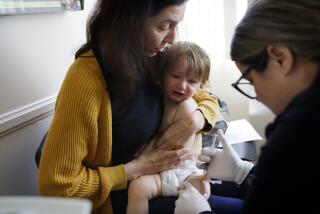Autism more likely among children conceived in winter
- Share via
Children conceived in winter are more likely to develop autism than those conceived in other months of the year, according to a study of more than 7 million births in California. The findings suggest that at least some cases of the disorder may be linked to infectious diseases or other environmental facts, say researchers from UC Davis who conducted the study.
Epidemiologist Irva Hertz-Picciotto, graduate student Ousseny Zerbo and their colleagues studied birth records of more than 7.2 million children born in California from 1990 to 2002. After eliminating those who died within the first two years of life and those for whom birth certificate data did not allow computation of the month of conception, they were left with 6,604,975 children. These data were then linked to records from the California Department of Developmental Services to identify children receiving services for what the department considered “full syndrome” autism, a total of 19,238 cases.
The researchers reported online in the journal Epidemiology that children conceived in December were 9% more likely to develop autism than those born in July, those conceived in January were 8% more likely, those conceived in February were 12% more likely and those conceived in March were 16% more likely. Overall, those conceived in any of the winter months had a 6% increase in risk of developing autism. The researchers controlled for such factors as maternal education and race or ethnicity.
“Studies of seasonal variations can provide clues about some of the underlying causes of autism,” Hertz-Picciotto said in a statement. “Based on this study, it may be fruitful to pursue exposures that show similar seasonal patterns, such as infections and mild nutritional deficiencies.”
Alternatively, she said, it might be exposure to environmental factors in the first three months of the pregnancy that are the problem. “If so, we might need to look for exposures occurring a few months after conceptions that are at higher risk. For example, allergens that peak in the spring and early summer” or pesticide exposure during that period.
The incidence of autism in the United States has risen sharply in the past two decades, with the rate now above one in 167 children. Researchers have been searching for causes for the surge, but without much luck. Another study by Hertz-Picciotto has shown that the risk doubles for mothers over the age of 40. Other studies have shown links to antibodies in the mother’s body and to several different genes. None of those effects, however, are sufficient to account for the observed increase, and researchers now believe that the increased number of cases is caused by a confluence of many different susceptibilities and environmental agents.






